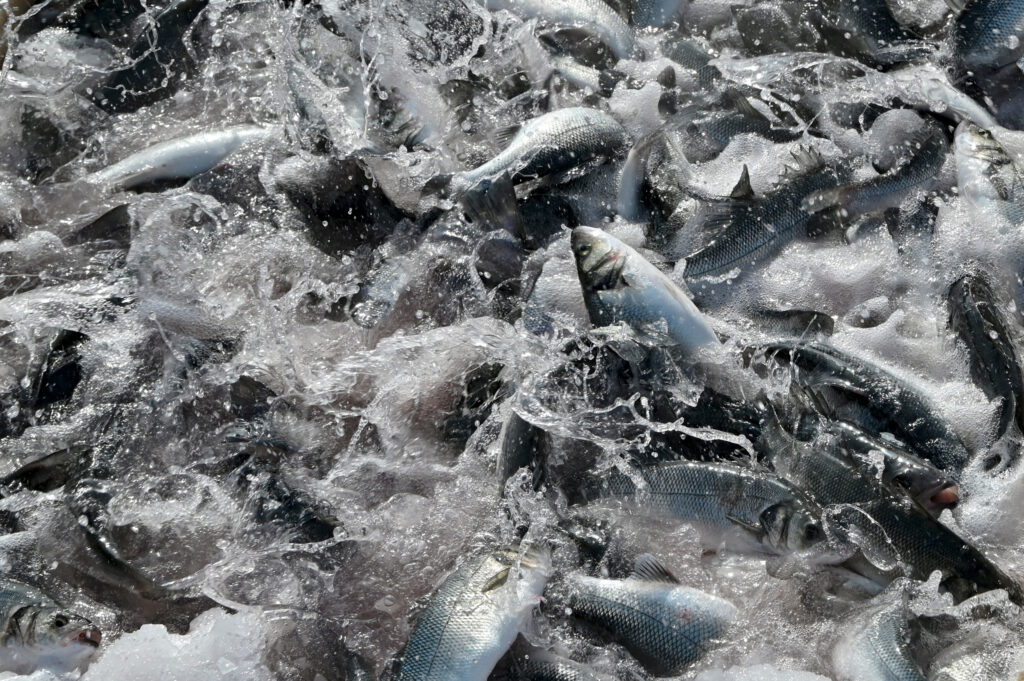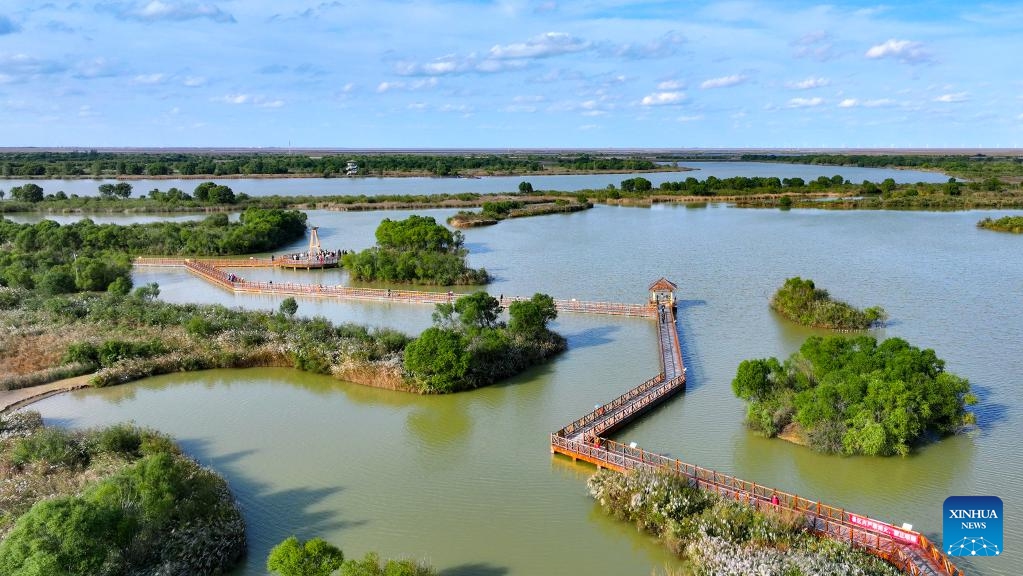Scotland charity’s record survival rates in seagrass transplant trials – Oceanographic Magazine

Report on Innovative Seagrass Restoration and Alignment with Sustainable Development Goals
Executive Summary
A report from the Scottish community-based marine conservation charity, Seawilding, details a significant advancement in marine ecosystem restoration. The project has achieved record success rates in the restoration of seagrass (Zostera marina) by employing an innovative adult shoot transplantation method. This initiative directly supports the achievement of several United Nations Sustainable Development Goals (SDGs), most notably SDG 14 (Life Below Water) and SDG 13 (Climate Action), by restoring critical marine habitats and enhancing natural carbon sinks.
Project Methodology and Key Findings
Confronted with the historical decline of seagrass meadows since the 1900s and the limited success of traditional seed-based restoration efforts, Seawilding has pioneered a new approach. The methodology involves transplanting tens of thousands of adult seagrass shoots from healthy donor meadows to restoration sites. This technique has yielded exceptionally positive and rapid results.
- A site planted in July 2024 demonstrated a substantial increase in seabed coverage from 10% to over 70% within a 15-month period.
- A subsequent trial in 2025 recorded a 97% survival rate for the transplanted shoots.
- The 2025 trial also resulted in a four-fold increase in seabed coverage in just six months, marking it as one of the most successful seagrass restoration projects in the UK.
Contribution to Sustainable Development Goals (SDGs)
The success of the Seawilding project provides a tangible contribution to the global sustainability agenda, with direct impacts on several key SDGs.
-
SDG 14: Life Below Water
This goal, focused on the conservation and sustainable use of oceans, seas, and marine resources, is at the core of the project.
- Ecosystem Restoration: The project directly restores critical coastal and marine ecosystems, helping to halt biodiversity loss.
- Habitat Creation: Revitalised seagrass meadows provide essential nursery habitats for a wide range of marine species, enhancing marine biodiversity.
-
SDG 13: Climate Action
The initiative makes a significant contribution to climate change mitigation through the restoration of “blue carbon” ecosystems.
- Carbon Sequestration: Seagrass meadows are highly efficient natural carbon sinks, capturing and storing atmospheric carbon at a rate much faster than terrestrial forests.
- Climate Resilience: Healthy coastal ecosystems increase resilience to the impacts of climate change.
-
SDG 17: Partnerships for the Goals
As a community-based charity, Seawilding exemplifies the power of local partnerships in achieving global goals.
- Community Engagement: The project model demonstrates successful mobilisation of community efforts for environmental conservation.
- Knowledge Sharing: The proven success of this methodology provides a valuable, replicable model for other conservation initiatives worldwide.
Conclusion
Seawilding’s seagrass restoration project represents a major breakthrough in marine conservation. The adult shoot transplantation method has proven to be a highly effective strategy for rapidly re-establishing vital marine habitats. The project’s success serves as a powerful case study on how targeted, community-led conservation efforts can deliver substantial progress towards achieving critical Sustainable Development Goals, particularly those concerning marine health (SDG 14) and climate action (SDG 13).
1. Which SDGs are addressed or connected to the issues highlighted in the article?
SDG 14: Life Below Water
- The article’s central theme is the restoration of seagrass meadows, which are critical marine and coastal ecosystems. The work of the charity Seawilding directly contributes to conserving and restoring marine life, which is the core objective of SDG 14. The text highlights that “Seagrass meadows provide critical habitat for marine biodiversity,” linking the project directly to the health of life below water.
SDG 13: Climate Action
- The article explicitly states that seagrass meadows “act as significant carbon sinks.” By restoring these ecosystems, the project contributes to climate change mitigation by enhancing natural carbon sequestration. This directly aligns with the goals of SDG 13, which calls for urgent action to combat climate change and its impacts.
2. What specific targets under those SDGs can be identified based on the article’s content?
SDG 14: Life Below Water
- Target 14.2: “By 2020, sustainably manage and protect marine and coastal ecosystems to avoid significant adverse impacts, including by strengthening their resilience, and take action for their restoration in order to achieve healthy and productive oceans.” The article is a clear example of “action for their restoration.” Seawilding’s project to transplant adult seagrass shoots is a direct effort to restore a degraded coastal ecosystem and improve its health and coverage.
SDG 13: Climate Action
- While no specific numerical target is mentioned, the project aligns with the broader aim of SDG 13 to take action against climate change. The restoration of seagrass as a “significant carbon sink” is a nature-based solution that contributes to mitigating climate change, which is fundamental to the overall goal.
3. Are there any indicators mentioned or implied in the article that can be used to measure progress towards the identified targets?
Indicators for SDG 14 (Target 14.2)
- Percentage of seabed coverage: The article provides explicit, quantitative data to measure the success of the restoration. It states that one site saw “seabed coverage soar from 10% to 70% in just 15 months,” and another trial resulted in a “four-fold increase in seabed coverage.” This serves as a direct indicator of ecosystem restoration progress.
- Survival rate of transplanted species: The article mentions a “survival rate of 97% in a recent trial.” This is a key performance indicator for the restoration technique, demonstrating its effectiveness and the resilience of the restored ecosystem.
Indicators for SDG 13
- Increase in carbon sequestration capacity (Implied): The article identifies seagrass as a “significant carbon sink.” While it does not provide data on the amount of carbon captured, the successful restoration and expansion of seagrass meadows imply an increase in the area’s capacity to sequester carbon. Therefore, the increase in seabed coverage also serves as a proxy indicator for enhanced climate action.
4. Table of SDGs, Targets, and Indicators
| SDGs | Targets | Indicators |
|---|---|---|
| SDG 14: Life Below Water | Target 14.2: Manage and protect marine and coastal ecosystems and take action for their restoration. |
|
| SDG 13: Climate Action | Take urgent action to combat climate change and its impacts. |
|
Source: oceanographicmagazine.com
What is Your Reaction?
 Like
0
Like
0
 Dislike
0
Dislike
0
 Love
0
Love
0
 Funny
0
Funny
0
 Angry
0
Angry
0
 Sad
0
Sad
0
 Wow
0
Wow
0




















































.jpg.webp?itok=0ZsAnae9#)

























